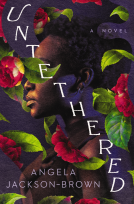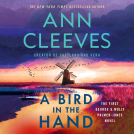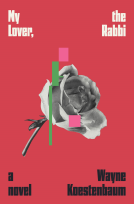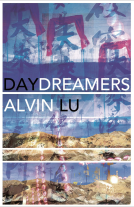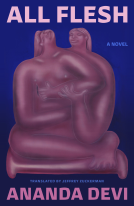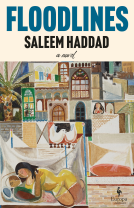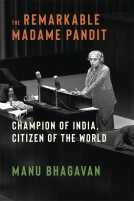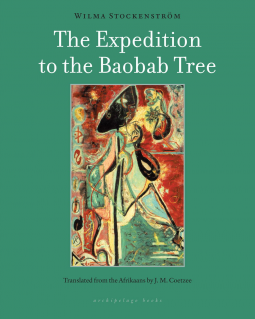
The Expedition to the Baobab Tree
A Novel
by Wilma Stockenstrom
This title was previously available on NetGalley and is now archived.
Send NetGalley books directly to your Kindle or Kindle app
1
To read on a Kindle or Kindle app, please add kindle@netgalley.com as an approved email address to receive files in your Amazon account. Click here for step-by-step instructions.
2
Also find your Kindle email address within your Amazon account, and enter it here.
Pub Date Apr 15 2014 | Archive Date Apr 15 2014
Steerforth Press | Archipelago
Description
Advance Praise
• "This mini-masterpiece is less a novel than an intimate monologue illuminating the nature of slavery, oppression, womanhood, identity, Africa, and nature itself. . . . 25 years after its introduction to English-speaking audiences, this tale still proves moving and vibrant." -- Publishers Weekly (starred review)
• "A meditation on humanity, mortality and time. A challenging, compelling work." -- Kirkus Reviews
• "An astonishing achievement." --The Star (South Africa)
• "A truly remarkable contribution, both for the lyrical quality of its prose and for its boldly imaginative theme." --World Literature Today
• "Lyrical ... dramatic ... epic. Of the living, active poets in Afrikaans she is the greatest." --André Brink, author of Philida and A Dry White Season
• "A compelling, richly textured fable." --Christopher Hope, author of Shooting Angels
• "Let me immediately say that this book gripped me from the very first paragraph and I could not put it down till I closed it late last night, deeply moved, with the realization: Today I read a great work." --Audrey Blignault, South African Broadcasting Corporation
• "A poignant reflection on death and the psyche of a human being." --Rapport
• "An evocative historical novella." -- Breyten Breytenbach
• "A work of brilliance, breathtaking, a relentless work that pushes the reader through a forced-open doorway between worlds, and then through another doorway, and then another, and then back the way she came, and then shows how all boundaries are dark illusions, labels we force onto categories of experience in lives that can’t be planned, or that can’t be planned by us." -- Elizabeth Bachner
• "From its stunning first lines to its beautiful last, J.M. Coetzee's brilliant Englishing of Wilma Stokenstrom's The Expedition to the Baobab Tree had its tendrils wrapped tight around me. Rarely in a novel––and never in one this slender––have I encountered such power, such tenderness, such elegance, such ferocity." -- Laird Hunt
Available Editions
| EDITION | Other Format |
| ISBN | 9781935744924 |
| PRICE | $18.00 (USD) |
Links
Average rating from 8 members
Featured Reviews
 Maxine M, Reviewer
Maxine M, Reviewer
A woman walks the same path each day from the hollow interior of a baobab tree in which she lives to her water source to collect her water. As she collects the water, she remembers the journey that brought her to this place.
She talks about her time in the veld. At first, her life in the baobab is difficult. She doesn’t know how to fend for herself and competes with animals for what she can scavenge, food that often makes her sick. She feels weak and scared and soon she finds that sleep is the ‘dense solution’. But when she wakes, she feels better, stronger
“…imperiously I stand now and gaze out over the veld, and every time I step outside the world belongs to me. Every time I step out from the protecting interior of the tree I am once again a human being and powerful…”
This is in stark contrast with her previous life She is sold into slavery as a child to a man to whom she’s nothing more than a sexual object. After giving birth, she’s sold to another master and her child is sold away from her. The new master is cruel. During the day, the slaves toil in the gardens but at night the young attractive slaves are at the mercy of the master’s lust and the narrator envies the older, less attractive slaves who are exempted from this; she wishes to be ‘unmanned’. Eventually, she is accidently buried under a branch of a kudu-berry tree, but another man sends his slaves to rescue her. He becomes her third master, the “Protector’. He’s a kinder master, pampering her and allowing her an ‘easy, indolent existence’.
When he dies, she fears his son would not be kind so she begs a man she calls ‘the Stranger’ to buy her. He’s a merchant who trades with the son. The son has a plan to develop a trade route through the interior of Africa and elicits the support of the Stranger. From the beginning, this journey is fraught with dangers and upsets: thefts of supplies, mutinous slaves, and dangerous predators both animal and human. In the end, the quest is a complete failure. Both the son and the stranger die and the surviving slaves are caught by slavers – all except her. She walks away to the shelter of her baobab tree.
The Expedition to the Baobab tree was written in 1981 by Afrikaner author Wilma Stockenstrom and has recently been translated into English by Nobel laureate JM Coetzee. It is a non-linear interior monologue and, at times, admittedly, I found it hard to follow and had to reread parts to figure out where I was. However, it is written with such beautiful and lyrical prose that, even when I was lost, I enjoyed the journey. It contains elements of fable (nature plays a very important role and noone, including the narrator is named), myth (she is seen as a divinity by a tribe that sees her near her tree and leave her gifts), and allegory as her ‘journey’ from slavery to freedom can be seen as a metaphor for a woman’s journey through life or, perhaps, the struggle in South Africa to end Apartheid. It touches on many themes such as identity, respect for nature, and the idea that freedom, even when it is accompanied by want is, in the end, better than the most benevolent slavery
– Or maybe I’m completely wrong. This is the kind of literary fiction that challenges the reader, makes them work at their understanding of the symbolism running throughout, and to place their own interpretation on it. As such, it won’t appeal to everyone but, for the reader who enjoys beautiful prose and enjoys being challenged by their reading, The Expedition to the Baobab Tree is well worth the effort .
 Claire M, Reviewer
Claire M, Reviewer
I came across this book by chance, first published as Die kremetartekspedisie in its original Afrikaans in 1981, it was translated into English by Nobel Prize winner J.M. Coetzee, initially in 1983 and again in 2014.
I had never heard of Wilma Stockenström, but after a little digging, I find:
"For the past four decades Wilma Johanna Stockenström has been enriching Afrikaans literature with her satirical, obstinate and compassionate voice. Along with Elisabeth Eybers, Sheila Cussons, Ina Rousseau and Antjie Krog, she remains one of the most important women writers in Afrikaans." © Johann de Lange
After recently reading Sue Monk Kidd's The Invention of Wings, a story narrated by a female slave, I was interested to read this more literary novel, set in the harsh interior of South Africa.
It is a quiet, compelling, stream of consciousness narrative of a slave woman who finds refuge in the hollow of a baobab tree, attempting to survive following the death of her third master, finding herself abandoned in an often hostile wilderness.
"I was sold off a second time on the square near the sea where even then the raggedy castor-oil trees were standing. Was sold secondhand. I was a damaged plaything, my bundle of baby and myself bid for separately and disposed of separately. Simply playthings. Useful, certainly. My owner thought he had wasted his money."
Embracing this newfound freedom of her body, mind and time, she thinks back over the years, reflecting on what her existence thus far has meant, the role of her three masters, moments shared with a friend, the loss of her children and the inclinations of man, something she has witnessed both in captivity and in this solitary freedom, where she finds a kind of disturbed though preferable peace.
"I know the interior of my tree as a blind man knows his home, I know its flat surfaces and grooves and swellings and edges, its smell, its darknesses, its great crack of light as I never knew the huts and rooms where I was ordered to sleep, as I can only know something that is mine and mine only, my dwelling place into which no one ever penetrates. I can say: this is mine. I can say: this is I. These are my footprints. These are the ashes of my fireplace. These are my grinding stones. These are my beads. My sherds."
She is viewed by a tribe of small people who make a pilgrimage to the tree and recognise her as some kind of deity. It is their generosity and ritual of giving alms that aids her survival.
She notices everything, she appreciates her surroundings and tunes into small changes and disturbances in it. She becomes it.
Haunting, lyrical, this work is unlike any other narrative of the life of a slave woman I have ever encountered.
Note: This book was an Advance Reader Copy (ARC) kindly provided by the publisher via NetGalley.
 Mandy J, Reviewer
Mandy J, Reviewer
In this lyrical and poetic stream of consciousness novel, we listen to an unnamed slave woman as she seeks shelter in a baobab tree in the harsh interior of southern Africa when she is left alone, for the first time in her life, after a failed expedition on which she accompanied her owner. As she struggles through her days finding food and water, she reminisces about her past and slowly we learn of all that has happened to her during her tragic life as a slave. Readers are drawn into her mind as she reflects on the meaning of her life, and what it means now to be free to make her own decisions. This is a haunting exploration of slavery, although the non-linear interior monologue makes it hard to follow at times. But it’s worth the extra effort, as this is the sort of book that lingers in the mind long after closing it. First published in 1981, it is now translated from the Afrikaans by J M Coetzee, and I feel it will deservedly become part of the canon of slave literature.
 Susan D, Reviewer
Susan D, Reviewer
The Expedition to the Baobab Tree is not an easy novel to read or to comprehend. It is often written in stream of consciousness style and involves the life of a woman captured as a child when her village was raided by slavers. The narrative is part memory, part recall of her life as a slave then mistress to her "benefactor", then a fever dream after a cross-veld trip goes horribly wrong. After that, her home and solace is the baobab tree, giver and prolonger of life. But the narrative does not follow a format of this order and it took very close attention for me to find a semblance of order in the almost mad ramblings that constitute some of this book.
At the same time, there are beautiful and evocative passages, descriptions of the land and people that call out to be re-read immediately. In the following passage is a hint of the terrible role that memory plays in this woman's life.
On the many paths of my memory there arise threatening figures that block every backward glance. I know these figures. I cannot name them. they loom up before me in the form of something human or sometimes like the corner of a hairy wall or a rolling hut opening that tries to swallow me and drag me off, an opening that storms down in a rage,
storms down at a tremendous speed, and then a yard from me suddenly swerves away and saunters and entices me;
sometimes too a quiet misshapenness of expectation followed by a noticeable dejection when the multitude of sharp pincers that grip me turn into the slack tendrils of a thicket, when the whole business disappears without further ado leaving an unfathomable grey behind. There are more tracks crisscrossing in my memory than I ever actually saw in a lifetime. (loc 53)
In this selection, the reader can get an idea of the confusion of images and ideas presented in the novel. These do all coalesce and become manageable by the end but it is challenging reading along the way. I plan to read this again someday.
Rating 3.5 rounded up to 4* because of the consistency and quality of the writing while acknowledging the difficulty of the reading process.
I was provided with an ecopy of this book by the publisher through NetGalley in return for an honest review.
 Andrija F, Educator
Andrija F, Educator
*The Expedition to the Baobab Tree* by Wilma Stockenström is a novel that weaves together myth, history, and personal narrative to explore themes of identity and belonging. Set in South Africa, the story follows a young African woman who embarks on a journey to find a legendary baobab tree, which symbolizes her quest for self-discovery and understanding of her cultural heritage. Through this journey, Stockenström delves into the complexities of colonialism, traditional African beliefs, and the impact of historical changes on individual lives. The novel is noted for its rich, poetic language and its deep, introspective examination of the protagonist’s inner and outer worlds.
Readers who liked this book also liked:
Antony Johnston
General Fiction (Adult), Mystery & Thrillers, New Adult
Elle Cosimano
General Fiction (Adult), Mystery & Thrillers
